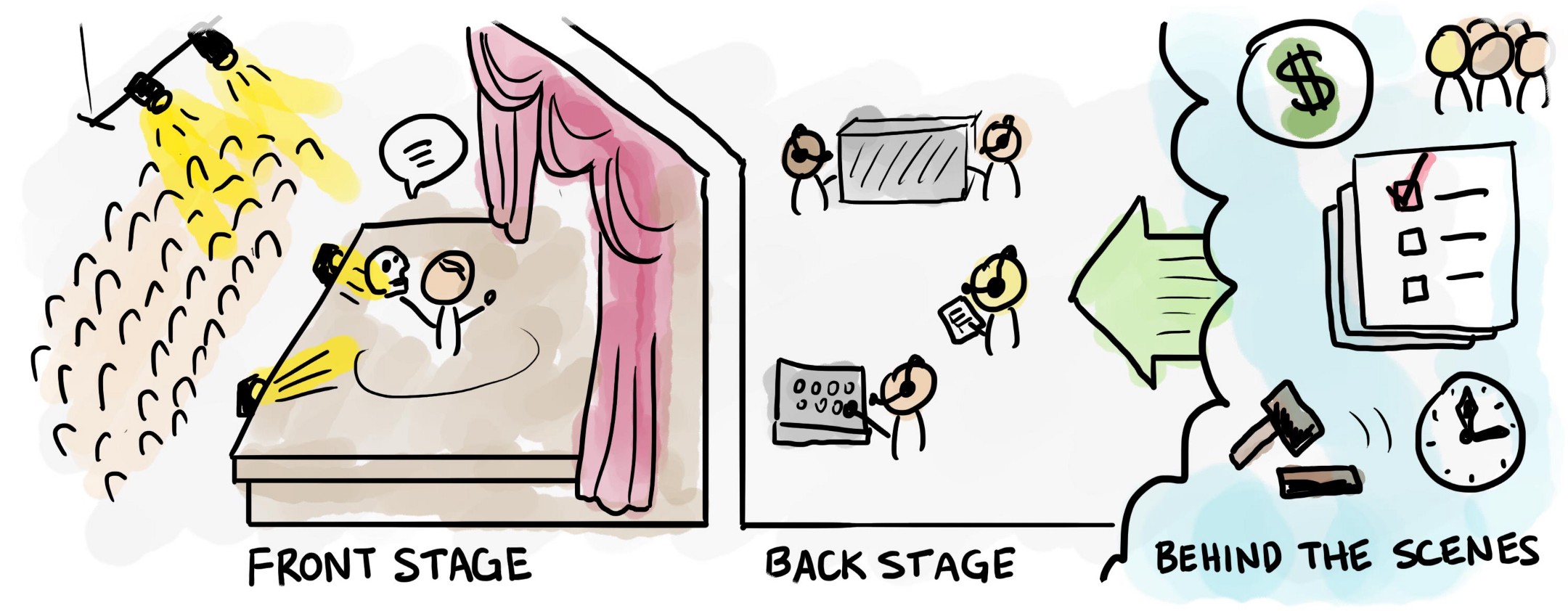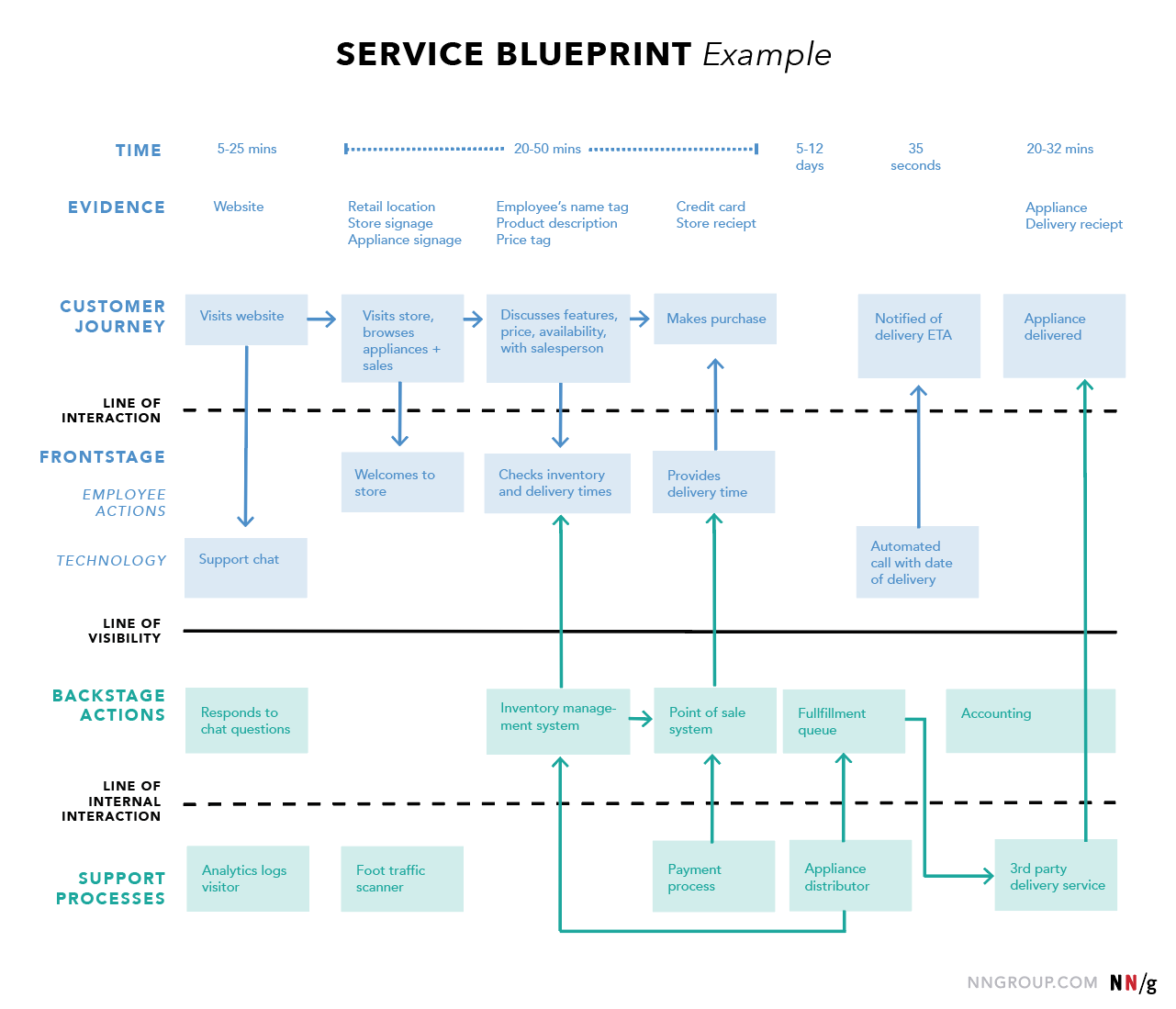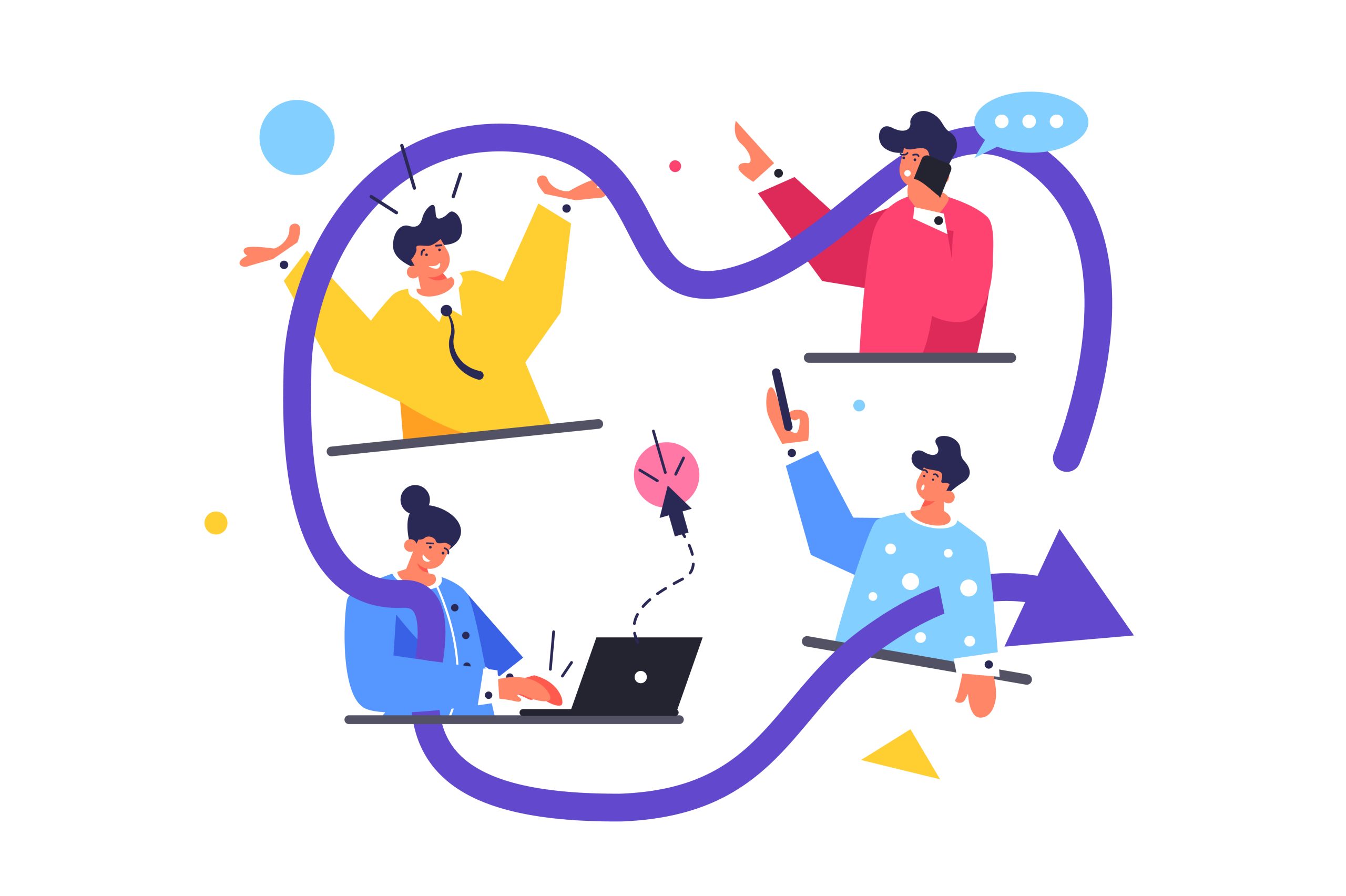Streamlining Complex Systems with Service Design for Enterprise
Service design for enterprise can be the thread that ties a company’s product or service offering together, ensuring a consistent, cohesive customer experience. With the right service design strategy, your organisation can build meaningful relationships with customers, optimise your processes, and drive innovation.
What is service design?
Are you looking for ways to simplify complex systems and make them easier to use for enterprise software? If so, service design can be an effective approach
Service design involves taking a customer-focused approach to design and creating products that provide value to customers, aligning with user, employee and business needs. It can be used to create a unified experience across the organisation and ensure consistency in the customer experience across multiple touchpoints.
One nice way of visualising how service design works to help unify experiences is by using the theatre to describe the processes and systems happening within an organisation as Tim Woolliscroft describes in his article. The front stage is what the customer sees. Back stage includes the policies, systems and procedures required to provide a good customer experience which is those behind-the-scenes activities going on in your organisation. The relationship between front stage and back stage is one that often requires big-picture thinking which we’ll discuss next.

Start with the big picture
By using service design to analyse and assess an existing system or process, organisations can identify gaps and opportunities for improvement. Service design can provide this “big picture” view of an existing system, enabling teams to identify any potential risks or issues. By utilising service design in this way, complex systems can be transformed into more unified, designed experiences.
A service blueprint is a fantastic way of showcasing this big-picture view of a system or process. It visualises the relationships between people and processes, that are directly tied to touchpoints in a specific customer journey. By being able to see things from this wider view, you’re able to identify and effect change easier. Below you can see a visualisation by Neilson Norman Group of how a service blueprint works with the different layers and touchpoints.

Identify areas of complexity
Enterprise software and legacy systems are often purchased without a clear understanding of the needs of the users or people using the system. This creates complexities as the system is often not fit for purpose. Using service design processes can help bring to the surface these barriers or challenges faced both front stage and backstage.
Teams can start to use these opportunities identified through mapping activites to create products that are user-friendly to ensure that users understand how to navigate the system. This then ties everything together, creating a consistent and cohesive customer experience across the organization driving customer loyalty and retention. Doing so can also reduce customer frustration, simplify customer service and support, and boost process optimisation.
Consolidate different systems
When your team can see the bigger picture, identify areas of complexity and start seeing the opportunities it becomes clear where changes need to be made. At this stage, you will start to see which systems interact with each other and where the overlap is. The customer journey will identify friction points and even parts of the journey where two systems might interact.
By using service design in this way you can start to see where you might consolidate or re-work systems you might be using. Are there ones that are doing the same job? Are they fulfilling the users needs as a whole or just part? At this point it’s important to consider the functionality the system offers and how this helps or hinders the user journey. Often legacy or enterprise systems aren’t integrated well throughout the user journey, and this offers a place to start to identify what system is required and potentially consolidate or replace it.

Simplify the customer journey
Service design is about making customer journeys as seamless and easy to use as possible whilst recognising a lot has to go on behind the scenes to make this happen. Using methods and frameworks like service blueprinting allows us to take a step back and see what’s working and what’s not. It allows your team to identify opportunities and start to create more efficient processes and unified experiences for customers of your systems.
Ready to get started? Let us help your organisation streamline customer journeys and build frameworks to simplify user friction points in the journey.

